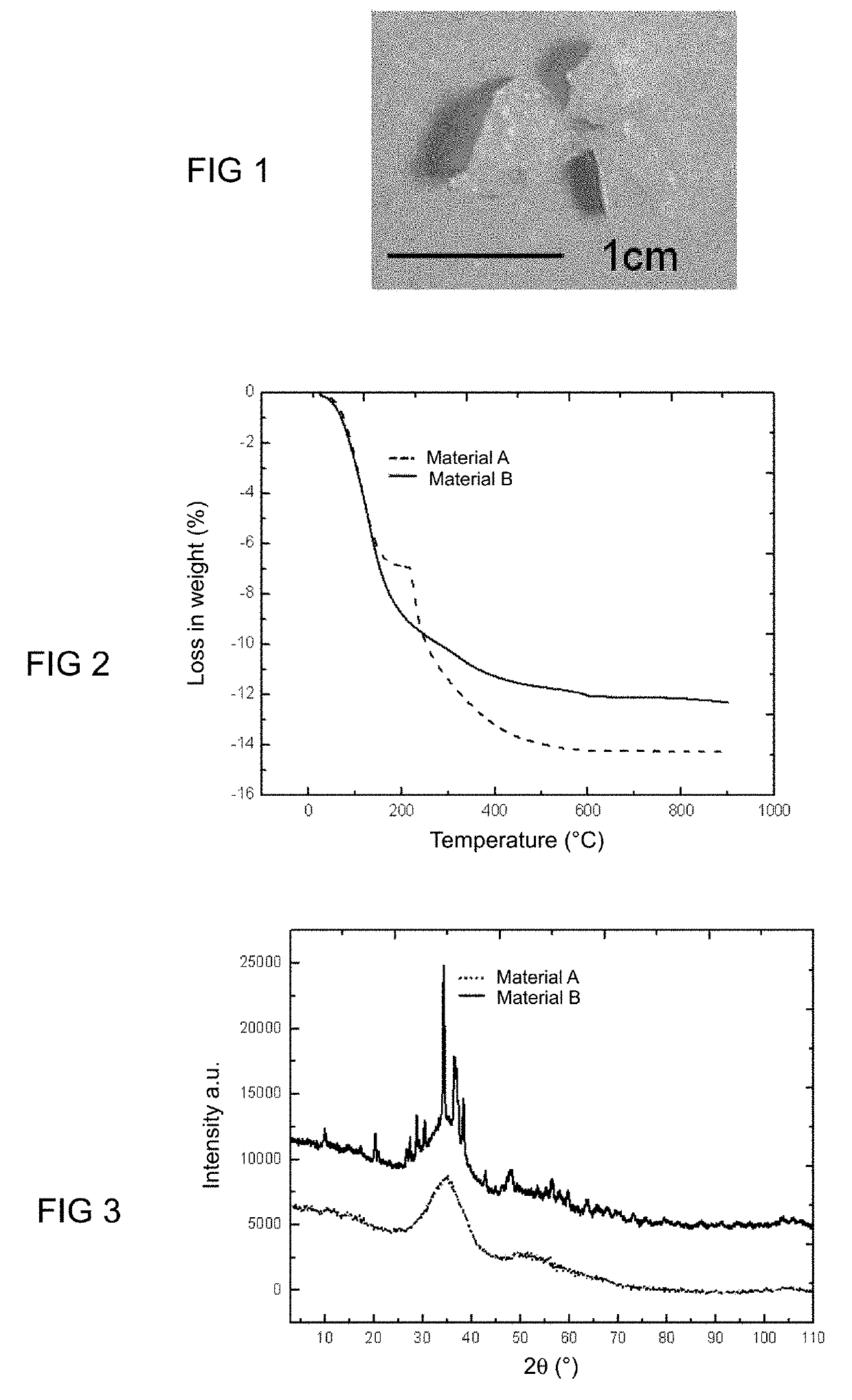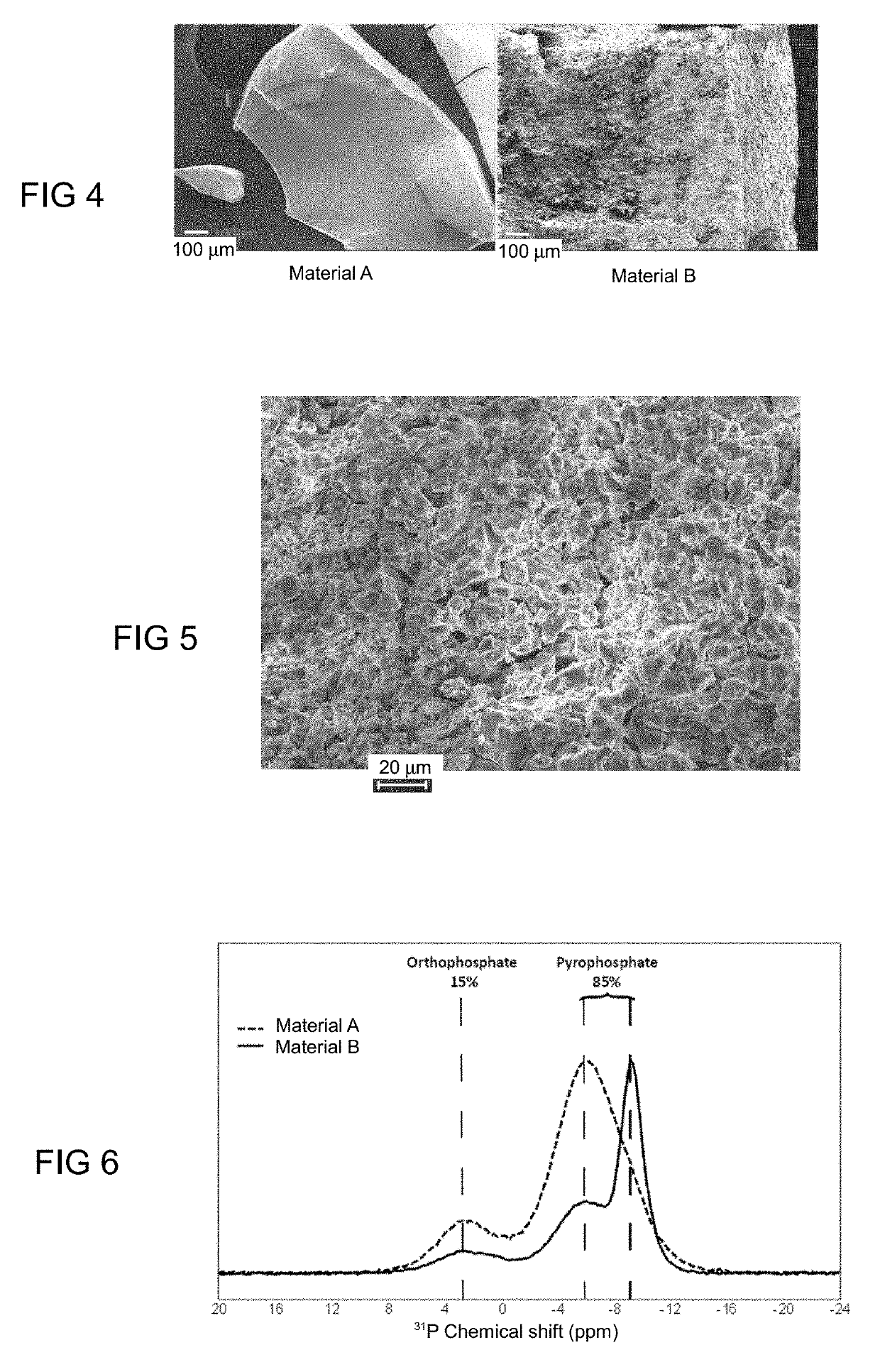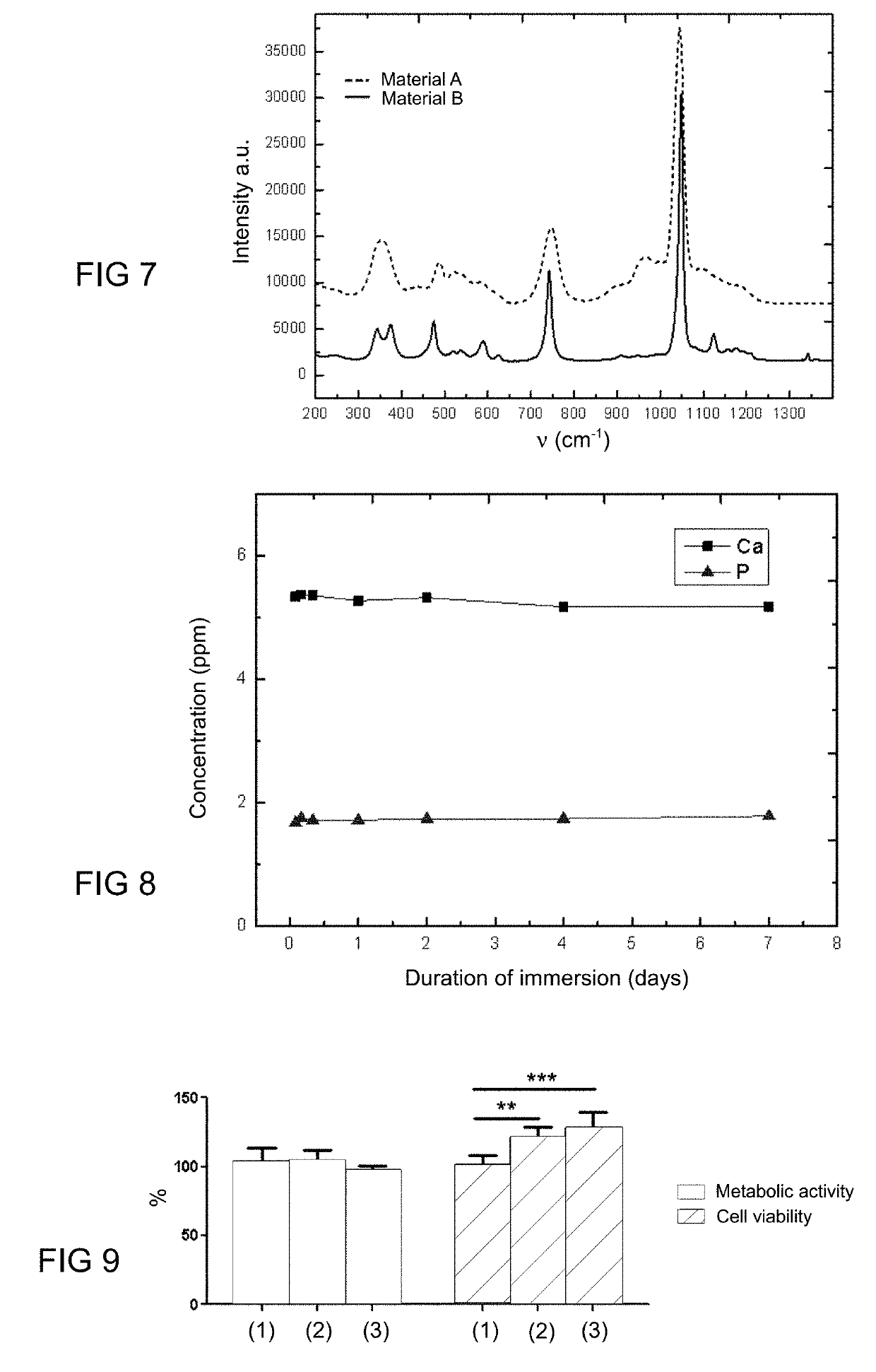Pyrophosphate type material, process for preparing such a material and use for bone repair
a pyrophosphate type, bone repair technology, applied in the field of biomaterials, can solve the problems of relatively rapid surface dissolution in the body, of the order of a few hours, and the speed of surface dissolution kinetics
- Summary
- Abstract
- Description
- Claims
- Application Information
AI Technical Summary
Benefits of technology
Problems solved by technology
Method used
Image
Examples
example 1
on of Vitreous Materials in Accordance with the Invention
[0099]Vitreous materials in accordance with the invention, respectively called Material A and Material B, are prepared, which materials have the following compositions:
Material A:
{[(Ca2+)0.84(K+)0.33]2[(P2O74−)0.80(PO43−)0.27]}.0.43H2O
Material B:
{[(Ca2+)0.80(K+)0.40]2[(P2O74−)0.80(PO43−)0.27]}.0.37H2O.
Material A is a glass, whereas Material B is a glass-ceramic.
[0100]These materials are each prepared by a process in accordance with the present invention, in the following way.
Step 1
[0101]A solution (1) of calcium precursor is prepared by dissolving CaCl2 in 20 ml of distilled water, in a proportion of 0.4 g for Material A and 1.6 g for Material B.
[0102]A solution (2) of pyrophosphate precursor is prepared by dissolving 5.5 g of K4P2O7 in 200 ml of distilled water.
Step 2
[0103]The solution (1) is added dropwise to the solution (2) over a period of time of 5 min.
Step 3
[0104]The resulting solution is washed with demineralized water...
example 2
ization of the Materials
[0106]For each of the Materials A and B obtained in example 1, the following characterization experiments were carried out.
Photography
[0107]A photograph of the Material A obtained is shown in FIG. 1.
[0108]It is observed therein that this material exists in the form of transparent millimetric pieces, which are characteristic of a glass.
Analysis by ICP-AES Spectrometry (Inductively Coupled Plasma-Atomic Energy Spectroscopy)
[0109]For the implementation of this technique, 100 mg of sample, mixed with 500 mg of lithium metaborate LiBO2, were heated at 1100° C. The resulting solid was dissolved in 200 ml of nitric acid at 1 mol / l. The solution was nebulized in the spectrometer (Ultima Horiba device). This technique made it possible to determine the calcium, phosphorus and potassium concentrations of each of the Materials A and B, and thus to confirm their composition and their chemical formulae.
[0110]The Ca, P and K concentrations thus determined are shown in table...
example 3
the Dissolution in a Solution Simulating Blood Plasma
[0126]The kinetics of dissolution of Material A were studied in a solution simulating blood plasma (SBF, simulated body fluid). SBF has an ion composition similar to that of human blood plasma (Kokubo et al., 1990, J. Biomed. Mater. Res., 24, 721-734).
[0127]The dissolution test was carried out by immersion of samples of Material A in the solution of simulated body fluid SBF. The principle of the use of this solution is to demonstrate the bioactivity of the material, characterized by its dissolution in the solution, followed by the formation of a precipitate, such as hydroxyapatite, at the surface of the material. The operating protocol is as described in the standard ISO 23317:2007.
[0128]More specifically, for each sample, 100 mg of Material A were immersed at 37° C. in 50 ml of SBF. At regular time intervals, a sample was withdrawn and analyzed by ICP-AES, after filtration and ten-fold dilution, for its concentration of calcium a...
PUM
| Property | Measurement | Unit |
|---|---|---|
| Fraction | aaaaa | aaaaa |
| Fraction | aaaaa | aaaaa |
| Thickness | aaaaa | aaaaa |
Abstract
Description
Claims
Application Information
 Login to View More
Login to View More - R&D
- Intellectual Property
- Life Sciences
- Materials
- Tech Scout
- Unparalleled Data Quality
- Higher Quality Content
- 60% Fewer Hallucinations
Browse by: Latest US Patents, China's latest patents, Technical Efficacy Thesaurus, Application Domain, Technology Topic, Popular Technical Reports.
© 2025 PatSnap. All rights reserved.Legal|Privacy policy|Modern Slavery Act Transparency Statement|Sitemap|About US| Contact US: help@patsnap.com



